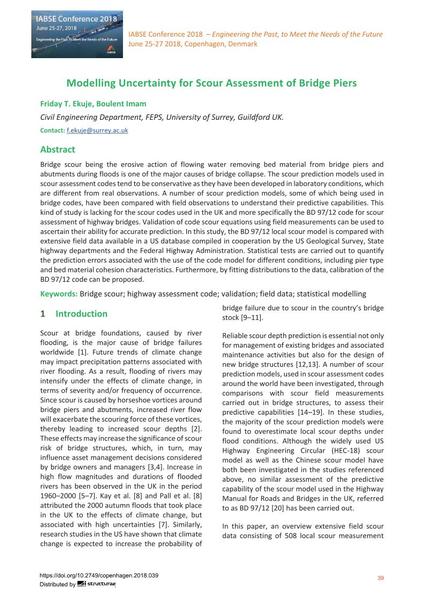| Medium: |
Tagungsbeitrag |
| Sprache(n): |
Englisch
|
| Tagung: |
IABSE Conference: Engineering the Past, to Meet the Needs of the Future, Copenhagen, Denmark, 25-27 June 2018 |
| Veröffentlicht in: |
IABSE Conference Copenhagen 2018 |
|
Seite(n):
|
39-46
|
Anzahl der Seiten (im PDF): |
8 |
|
|
Seite(n):
|
39-46
|
| Anzahl der Seiten (im PDF): |
8 |
| DOI: |
10.2749/copenhagen.2018.039 |
|
Abstrakt:
|
Bridge scour being the erosive action of flowing water removing bed material from bridge piers and abutments during floods is one of the major causes of bridge collapse. The scour prediction models used in scour assessment codes tend to be conservative as they have been developed in laboratory conditions, which are different from real observations. A number of scour prediction models, some of which being used in bridge codes, have been compared with field observations to understand their predictive capabilities. This kind of study is lacking for the scour codes used in the UK and more specifically the BD 97/12 code for scour assessment of highway bridges. Validation of code scour equations using field measurements can be used to ascertain their ability for accurate prediction. In this study, the BD 97/12 local scour model is compared with extensive field data available in a US database compiled in cooperation by the US Geological Survey, State highway departments and the Federal Highway Administration. Statistical tests are carried out to quantify the prediction errors associated with the use of the code model for different conditions, including pier type and bed material cohesion characteristics. Furthermore, by fitting distributions to the data, calibration of the BD 97/12 code can be proposed.
|
|
Stichwörter:
|
Validierung
|

